Although upgrading your existing boiler to a new high-efficiency boiler is a proactive way of reducing your fuel bills, heating controls are as, if not more important than replacing the boiler. Controls can be added to an existing system with an existing boiler at a fraction of the cost of changing the boiler and still provide a substantial saving on fuel bills depending on usage.
According to a study by OFGEM, heating makes up over 60% of the £1342 average annual energy bill. Despite this, 1 million UK homes don’t have suitable controls, like room thermostats and instead simply turn the boiler on when they are cold and turn the boiler off when they are too hot. According to English Housing Survey data, of the 95% of homes that have a boiler run heating system, 800,000 have no controls at all, almost 8million have no room thermostat and over 70% have controls that don’t meet the minimum levels set down in the 2010 revised Part ‘L’ building regulations.
The installation of a room thermostat and thermostatic radiator valves to an existing system alone can save the average household between £80 – £165 per year.
If you already have a room thermostat, turning it down by just one degree can save the average household between £85 to £90 pounds a year.
One of the most common misconceptions is that having a system with just timer control and thermostatic radiator valves is adequate control. This is not the case because the thermostatic radiator valves do not tell the boiler when the house is warm enough, they only shut off individual radiators and cause the boiler to cycle on and off constantly when the house is up to temperature until the timer/programmer turns off. Constant cycling of a boiler will wear out boiler components sooner especially circuit boards. Households with this system control set up should seriously consider the fitting of a room thermostat. A room thermostat is a low-cost upgrade to your heating system and will pay for itself at least within two years if not sooner depending on the type fitted.
Below is a list of different types of heating controls available:
Thermostatic radiator valves
These are radiator valves with thermostatic sensing heads that allow the user to set a certain temperature for individual rooms. When the set point is reached the radiator flow is shut off preventing overheating of rooms especially unoccupied rooms.
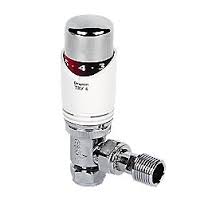
Timer/Programmer
This device allows the user to programme independent hot water and heating on and off schedules for the week and weekend or individual times for each day if necessary. Programmers come in mechanical or digital format depending on the user’s preference.
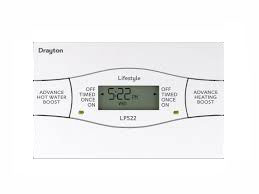
Cylinder thermostat
A cylinder thermostat is a device which is either attached to the side of or inside a pocket of the hot water cylinder in the airing cupboard. This device allows the user to set the temperature they would like the hot water to be. When the temperature is reached the boiler stops heating the cylinder preventing overheating of hot water and energy wastage. In hard water areas, this will also help to limit scale build up in the cylinder as well.
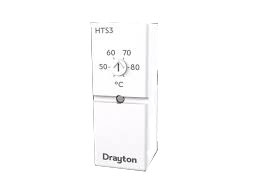
Room Thermostats
Room thermostats provide temperature control by sensing air temperature which will turn the boiler on or off depending on the temperature set point on the room thermostat.
Room thermostats come in various formats dial type to digital, hard-wired to wireless, programmable, modulating and smart.
The dial type is the traditional wheel type that the user turns up and down by hand and sets it to a suitable constant temperature.
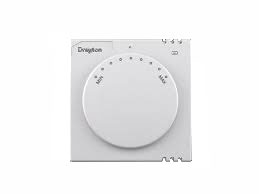
Digital room thermostats (which are the more common thermostat fitted today) come in room sensor format or programmable. Digital room thermostats are more accurate than dial type thermostats as they show the actual temperature on the display so the user knows exactly what the temperature is.
Room sensor format is very similar to the dial type thermostat as in the user turns the temperature up or down to set the set point at which the boiler turns off. The advantage of digital is that the display shows the exact temperature of the room.
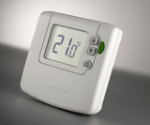
Programmable room thermostats offer a programmer and room thermostat all in one. The user programmes temperature set point changes at certain times throughout the day to bring boiler on or off to suit life style patterns.
Digital thermostats also have a delay built into them so that they will let the house cool down by a set amount before turning boiler back on, thus allowing the boiler to run for longer periods rather than short bursts prolonging the life of boiler components.
Some programmable thermostats have a learning function where it monitors how the house heats up and cools down and learns how long to run boiler for to heat house up and how long to leave it off to allow the house to cool.
Wired programmable room thermostats are suitable if you already have a dial type thermostat and you want to upgrade or you can run a wire to a thermostat position. If there isn’t a room thermostat currently and the location of the thermostat is not easy to run a cable to then a wireless version is available for ease of installation and minimal disruption.
A room thermostat can be fitted to all heating systems and boiler types at a relatively small cost compared to the savings achieved.
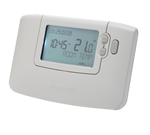
Modulating Room Sensors
These devices are normally provided by the boiler manufacturer as they are only compatible with their brand of boiler. A modulating room thermostat communicates with the boiler to alter the temperature of the heat leaving the boiler. The temperature of the heat leaving the boiler corresponds to the temperature set on the thermostat and will modulate as the house heats up and cools down. The advantage of a modulating room thermostat is that it provides more savings to your energy bills compared to other room thermostats.
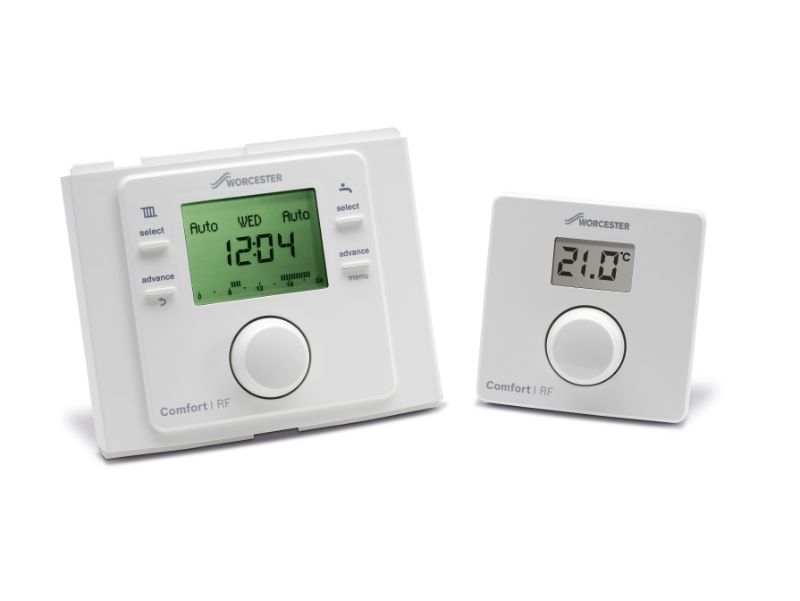
Weather Compensation
Weather compensation adjusts boiler output by taking a reading of the outdoor temperature. The temperature of your home will vary throughout the heating season. When it is colder outside the heat loss through the fabric of the building is more, so the temperature of the radiators or underfloor heating needs to be higher and equally when it is milder outside the heat loss is less so less heat is required to achieve the set point.
Weather compensation would be like the user turning the boiler heating thermostat up when it is cold outside and turning it down when it is milder. Instead of the user having to think about this, a weather compensation sensor is positioned on the north facing wall of the property and the boiler takes a reading of the outside temperature and automatically adjusts the output accordingly.
Weather compensation can save an extra 15% on an average fuel bill.
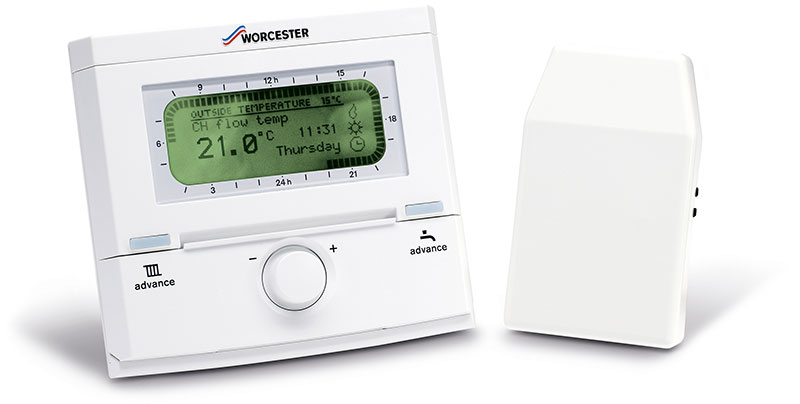
Smart Controls
Smart controls are the next generation of heating controls, offering complete control of your heating and hot water system whether you are home or away.
Smart Controls are basically heating controls that you remotely control using an app display on your smartphone or tablet. Via the app you can set heating and hot water times, set the set point temperature of the room sensor and view history of your heating and hot water activities. Some controls offer the following additional features
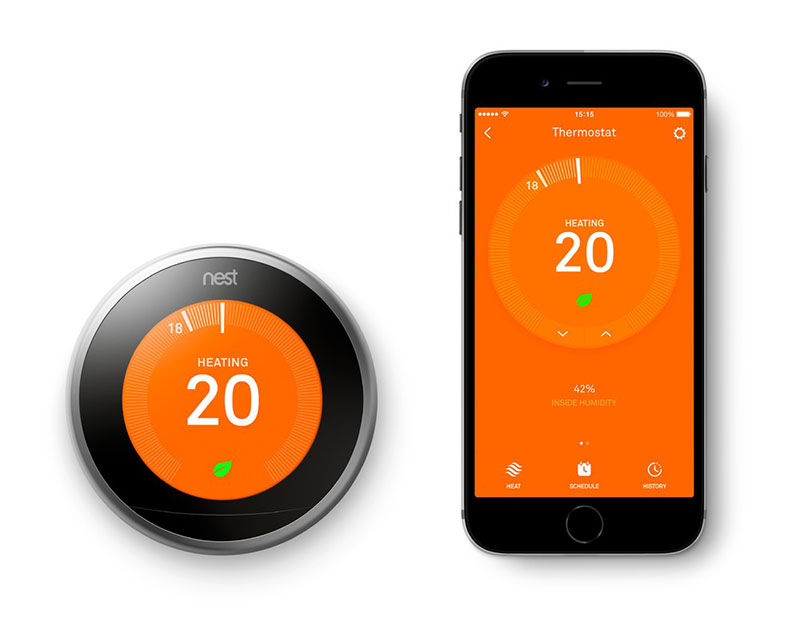
Smart Controls Auto Away
The Auto Away feature senses when you’re not around. The room sensor has a motion sensor built in. If the sensor detects a prolonged spell of inactivity, the sensor will automatically adjust the temperature to a more economic level to save wasting heat. Some sensors also look at the range of the smart device. So if your phone or tablet is out of range, the sensor will adjust the room temperature or timing schedule accordingly understanding your living patterns.
True Radiant
This feature learns how long your home takes to heat up and uses just enough energy to keep the house warm.
Weather compensation
The smart control takes a local weather temperature reading from the MET website and will adjust boiler output to suit weather conditions.
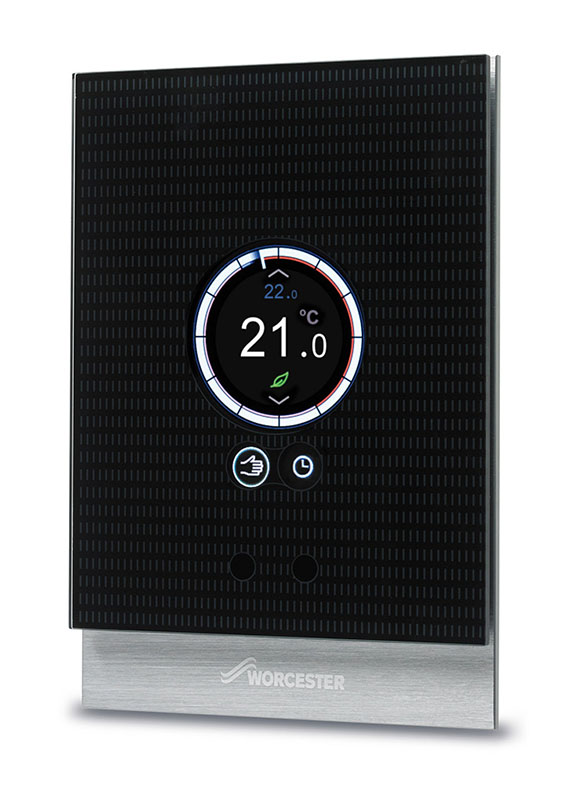
Nest Learning Thermostat
Contact Us
To get a FREE no-obligation quote, call Tel: 01202 386439 or Mobile: 07887 647921 now or complete our online enquiry form.
